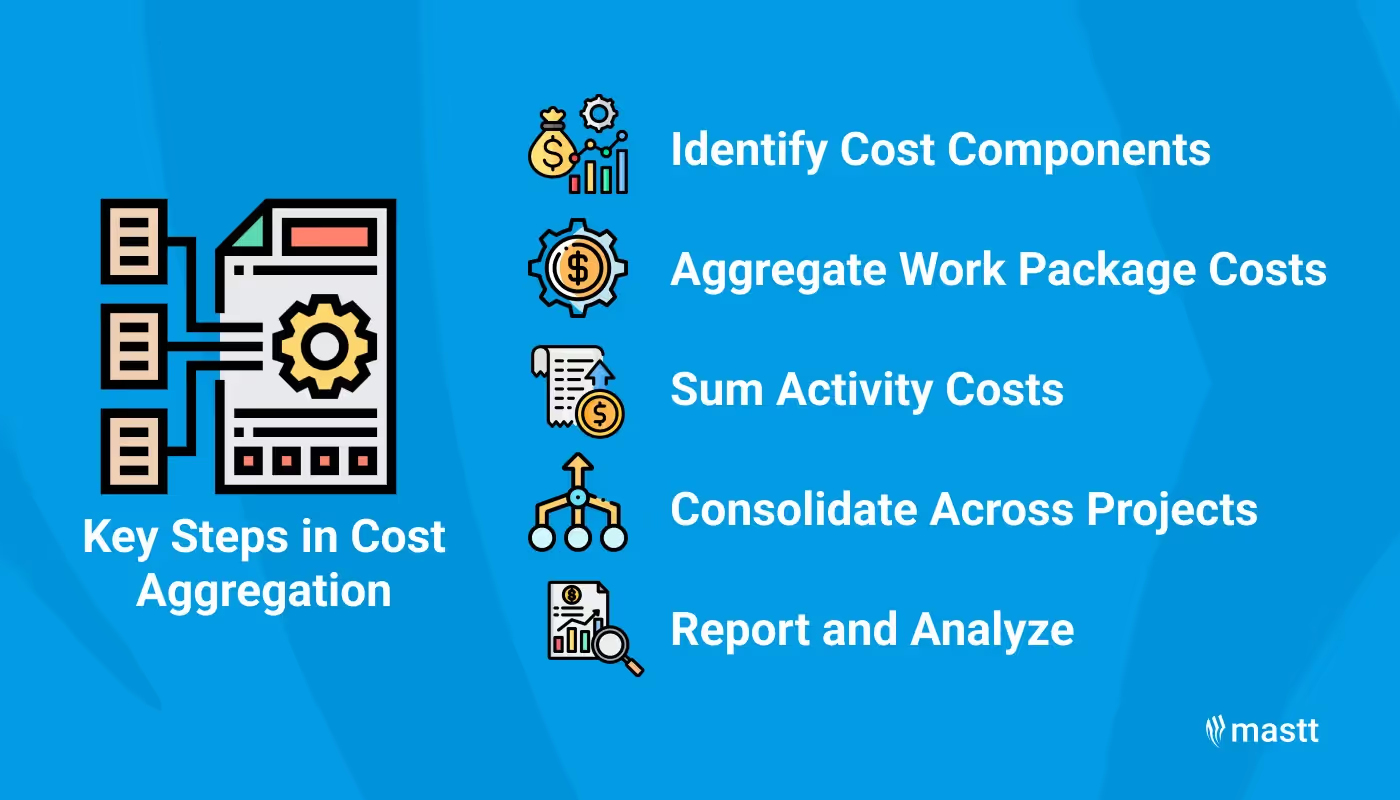Managing multiple projects can feel like juggling too many balls at once. Different teams, expenses, and tools make it tough to see the big picture of your finances. That’s where cost aggregation comes in. It’s a smart way to pull all those scattered numbers together so you can make better decisions and avoid overspending.
Whether you're managing a single project or an entire portfolio, understanding cost aggregation can help you stay on budget and make informed financial decisions.
What is Cost Aggregation?
Cost aggregation is the process of combining costs from individual tasks, phases, or projects into a single, cohesive report. Think of it as organizing a messy closet—everything gets sorted, categorized, and presented in a way that’s easy to access and understand. This technique is especially critical in multi-project environments, where decisions depend on a clear picture of overall spending.
This process is a key part of project cost management, which is all about keeping your project spending under control. If you’re curious, check out this helpful Project Cost Management guide for more details.
Why Cost Aggregation Matters in Project Management
If you’re managing just one project, construction cost tracking might seem easy. But when you’re running several projects at once, things can quickly get out of hand. Cost aggregation is your secret weapon for staying on top of everything. Here’s why it’s so important:
Spot Problems Early
Without cost aggregation, it’s easy to miss signs of overspending until it’s too late. By combining all your project costs into one report, you can catch issues before they spiral out of control.
Make Reporting Easy
When stakeholders—like your boss or clients—ask for an update, an aggregated cost report lets you deliver the information they need quickly and clearly. No more scrambling through spreadsheets!
Make Better Decisions
Seeing all your costs in one place makes it easier to decide where to cut back, where to invest more, or how to spread resources across projects.
Key Steps in Cost Aggregation
Cost aggregation follows a structured approach to ensure that all financial data is accurately compiled. Here’s how to implement it:

Identify Cost Components
The first step is to identify the key areas where costs occur. Then, break down the project into smaller, manageable parts. These could be labor, materials, equipment, or subcontractor expenses. Think of this as setting the stage for aggregation—knowing what to track is half the battle.
Aggregate Work Package Costs
Once you’ve gathered the data, the next step is to group it into categories. For example, you might group costs by department, project phase, or type of expense. This creates a clear structure for your final report.
For larger projects, it’s essential to group costs at the work package level. Each work package’s costs are calculated separately and then aggregated.
Sum Activity Costs
Activity-level costs (for individual tasks within work packages) are added to get a clearer picture of the project’s financial health.
Consolidate Across Projects
When working with multiple projects, sum the costs from each to provide a comprehensive overview of total expenditures.
Report and Analyze
With the costs aggregated, use reporting tools to generate actionable summaries. These reports should highlight key metrics, such as total spending, variance from budgets, and forecasts for remaining expenses.
Challenges in Cost Aggregation and How to Overcome Them
Like any worthwhile endeavor, cost aggregation comes with its own set of challenges. But fear not—most of these can be addressed with the right strategies.
Inconsistent Data
One of the biggest hurdles in cost aggregation is inconsistent or incomplete data. For example, one team might use a different format for construction cost tracking than another. The solution? Establish clear guidelines and invest in tools that enforce data consistency.
Stakeholder Resistance
Not everyone loves change, especially when it involves new processes or software. Overcoming resistance requires clear communication about the benefits of cost aggregation, coupled with training and support.
Tool Limitations
Using outdated or inadequate tools can hinder your aggregation efforts. Modern project management software—like Mastt—can streamline data collection and reporting, making the process far less painful.
Cost Aggregation in Project Management
Cost aggregation in project management is widely used by project managers to streamline cost reporting across various initiatives. The Project Management Professional (PMP) exam often references cost aggregation as a key concept for controlling budgets in large-scale projects. If you're preparing for the PMP or similar certifications, understanding cost aggregation PMP will be essential.
This method is also invaluable for organizations employing an integrated project management system. When combined with tools like earned value management or construction cost forecasting, cost aggregation provides real-time insights into the financial status of ongoing projects, making it easier to manage costs proactively rather than reactively.
For a closer look at tools that can help with cost tracking, check out Mastt's resources on the Capital Project Cost Tracker in Excel.
Final Thoughts
At its core, cost aggregation is about determining the aggregate cost of a series of activities or projects. The aggregate cost definition is simple: it is the total cost of all activities combined. This number becomes crucial when reporting to upper management or external stakeholders, as it provides a snapshot of the overall financial commitment.
By understanding the aggregate cost, project managers can ensure that they are not only adhering to individual project budgets but also maintaining overall financial health across a program or portfolio.






.avif)





![What is a Contingency Budget and How to Use It [Construction Program]](https://cdn.prod.website-files.com/607f739c92f9cf647516b37b/673325d5081116fdb02c07df_66fe088871eaac42a86d93e9_What%2520is%2520a%2520Contingency%2520Budget%2520%2526%2520how%2520to%2520use%2520it.avif)
![14 Proven Ways to Reduce Construction Costs [Free Checklist]](https://cdn.prod.website-files.com/607f739c92f9cf647516b37b/67e1f607e284e7835370f1d5_ways-to-reduce-construction-costs.avif)

